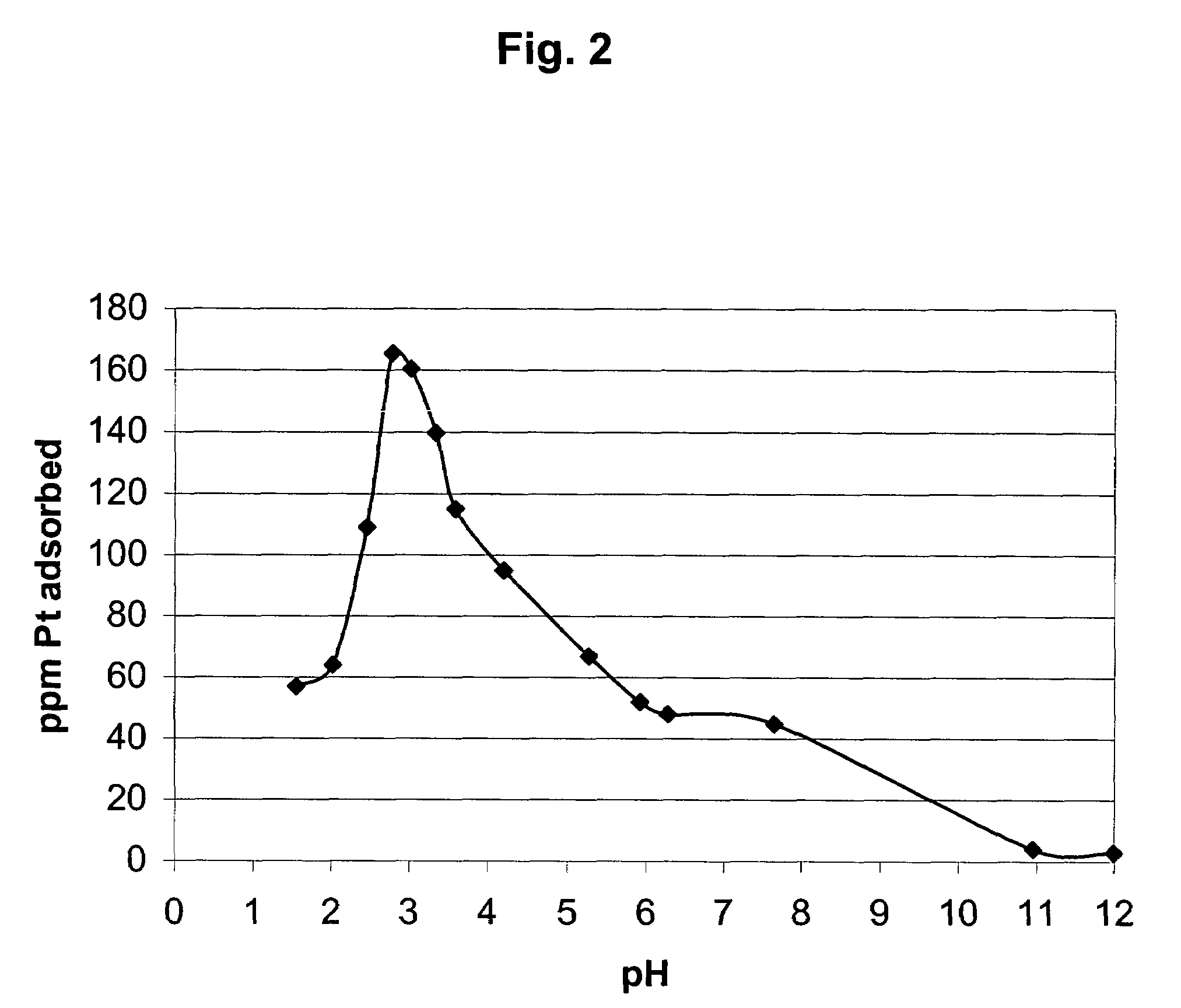Method for preparing highly loaded, highly dispersed platinum metal on a carbon substrate
a technology of platinum metal and carbon substrate, which is applied in the direction of liquid/solution decomposition chemical coating, cell components, physical/chemical process catalysts, etc., can solve the problems of cumbersome use and achieve the effect of low cost and high yield
- Summary
- Abstract
- Description
- Claims
- Application Information
AI Technical Summary
Benefits of technology
Problems solved by technology
Method used
Image
Examples
example 1
Chloropantinic Acid (CPA) Over Carbon: Synthetic Procedures
[0035]In adsorption studies, the amount of carbon needed to provide 500 m2 of surface area in 50 milliliters of CPA solution is calculated as follows:
[0036]M=SL*VSA
[0037]in which:[0038]M is the mass of the carbon needed, (g),[0039]SL is the surface loading, in this case, 500 m2 / L,[0040]SA is the surface area of carbon (m2 / g),[0041]V is the volume of the CPA solution, 0.05 L.
For example, the amount of Norit® CA1 (1400 m2 / g) charcoal powder needed would be:
[0042]500(m2 / L)*0.050(L)1400(m2 / g)=0.01786(g)
[0043]Fifty milliliters of dilute CPA (close to 200 ppm Pt or 1.02×10−3 M) is adjusted to various pH values using HCl or NaOH. The pH of aged 200 ppm CPA solution is about 2.40. For more acidic solutions, HCl is added in the appropriate amount. For more basic pH values, due to the hydrolysis of CPA and the associated decreases in pH, a complex procedure is needed.
[0044]Different amounts of NaOH (1M) are added to get a ...
PUM
| Property | Measurement | Unit |
|---|---|---|
| Length | aaaaa | aaaaa |
| Angle | aaaaa | aaaaa |
| Volume | aaaaa | aaaaa |
Abstract
Description
Claims
Application Information
 Login to View More
Login to View More - R&D
- Intellectual Property
- Life Sciences
- Materials
- Tech Scout
- Unparalleled Data Quality
- Higher Quality Content
- 60% Fewer Hallucinations
Browse by: Latest US Patents, China's latest patents, Technical Efficacy Thesaurus, Application Domain, Technology Topic, Popular Technical Reports.
© 2025 PatSnap. All rights reserved.Legal|Privacy policy|Modern Slavery Act Transparency Statement|Sitemap|About US| Contact US: help@patsnap.com



